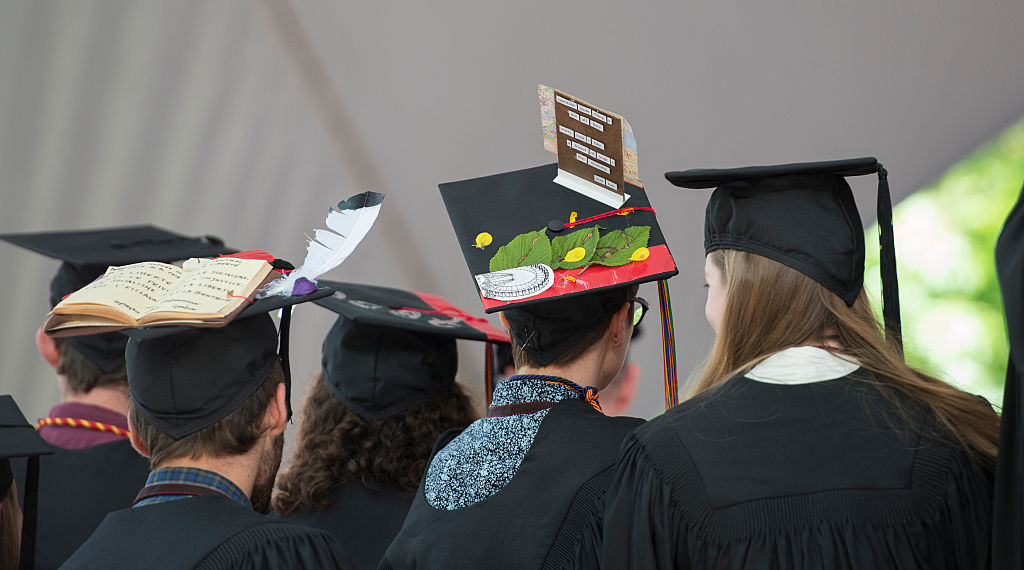
On Oct. 31, the Supreme Court heard oral arguments about universities’ use of affirmative action, a type of race-conscious admissions. However, sprinkled throughout the hours-long hearings were references to an older and more arcane admissions policy known as legacy admissions.
Legacy admissions were first established a century ago in the Northeast, to limit the matriculation of Jewish and Southern European immigrants into prestigious institutions. They were designed to protect the positions of white, wealthy, Protestants at elite universities. Since they function by rewarding those with a familial connection to a university, legacy admissions continue to hinder the matriculation of those new to college or to the United States—applicants of color, low socioeconomic status and immigrants.
Legacy admissions were created by men of high society and largely served to benefit men of a similar standing. Women by contrast had only recently won the battle to attend university.
In 1840, Catherine Brewer became the first woman to graduate with a bachelor’s degree. It took more than three decades for the first woman to earn a law degree. And while women slowly became more involved in post-secondary education, they were frequently educated in women’s colleges, where at the time opportunities were often starkly limited. It wasn’t until 1969 that several prestigious women’s colleges finally merged with their male counterparts or began to otherwise admit women.
As more women began to matriculate into university, they became larger beneficiaries of legacy admissions. In 2021, women made up 59.5 percent of all U.S. college students, a record high and stark reversal from 1970, when men comprised 58 percent of undergraduates. However, the benefits of legacy admissions have been felt unequally across female applicants as a whole. A 2019 study showed that at Harvard (one of the universities where admissions is best understood) 70 percent of legacy applicants were white. Data from Harvard in 2002 showed only 7.6 percent of legacy admits were from underrepresented groups.
While some consider the advantage given to legacy applicants as negligible, a variety of data indicate that it has considerable influence. A 2007 study of selective colleges indicated that legacy applicants were three times more likely to be admitted than an equally qualified non-legacy applicant. At Harvard, legacy applicants were six times more likely to be admitted than non-legacies of equal credentials.
Despite the benefit that more female students are deriving from legacy admissions, they have also been some of its most vocal critics. Statistically, young women lean more progressive, a trend which has markedly increased over the past decade. In 2011, 30 percent of women 18-29 years of age identified as liberal, while in 2021, 44 percent identified as such. The percentage of young men identifying as liberal during the same time period remained largely the same, at around 25 percent.
Women are also more likely to support efforts at improving diversity. A recent poll out of Rutgers University revealed that 58 percent of women believe that ethnic and racial diversity in the workplace is “very important,” compared to 48 percent of men. The margin between men and women was even greater when asked about the importance of gender diversity in the workplace.
It makes sense, then, that female students at some of the U.S.’s premier institutions have taken up the mantle to end legacy admissions. Zoe Fuad, co-president of the group Students for Educational Equity, said she sees legacy admissions as reinforcing a “cycle of inequity” designed to serve white wealthy men. Over the past several years, she’s worked to push Brown University to disclose data related to legacy admissions and ultimately end the practice altogether.
Other examples of female students spurring their administrations forward on legacy admissions abound. At both Tufts University and Cornell University, Ameya Menta and Claire Tempelman, respectively, authored resolutions against legacy admissions that were adopted by their student senates or assemblies.
As more universities and state legislatures eliminate legacy admissions, such as Amherst, Tufts University School of Medicine and the State of Colorado, students continue to gain traction in the fight for educational equity.
“As women, we understand that the fight for equity involves dismantling the hidden advantages that lead to persistent segregation in the classroom and beyond,” said Menta. “Legacy admissions is not a distant policy for us. Opposing it is a fight for our own rights and a fight to assert our place as students and leaders.”
Up next:
U.S. democracy is at a dangerous inflection point—from the demise of abortion rights, to a lack of pay equity and parental leave, to skyrocketing maternal mortality, and attacks on trans health. Left unchecked, these crises will lead to wider gaps in political participation and representation. For 50 years, Ms. has been forging feminist journalism—reporting, rebelling and truth-telling from the front-lines, championing the Equal Rights Amendment, and centering the stories of those most impacted. With all that’s at stake for equality, we are redoubling our commitment for the next 50 years. In turn, we need your help, Support Ms. today with a donation—any amount that is meaningful to you. For as little as $5 each month, you’ll receive the print magazine along with our e-newsletters, action alerts, and invitations to Ms. Studios events and podcasts. We are grateful for your loyalty and ferocity.












